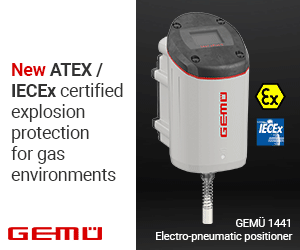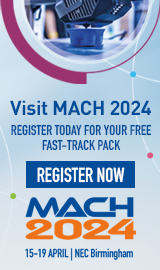IT Infrastructure Solution Guide for Manufacturing Businesses
Who is this Guide Intended For?
This guide is designed for IT professionals who manage the IT infrastructure at a manufacturing business, and who are looking for an application and desktop delivery solution to improve infrastructure security, reduce costs, and provide employees with more flexibility and productivity tools.
An application and desktop delivery solution should allow the IT professionals to provide remote access to line-of-business (LOB) software while maintaining full control of the IT infrastructure and keeping the business’ confidential data secure.
Why Should Manufacturers Invest in an Application Virtualization Solution?
Application and desktop delivery solutions provide the IT team with the capability to deliver a reliable, secure, and flexible system that both management and operators can use to improve their workflow and keep up with workplace demands.
Below are some of the benefits for a manufacturing business that invests in an application delivery solution:
Reduce IT Overheads
Application and desktop delivery offers many benefits when it comes to lowering overhead and reducing cost. First off, taking advantage of application virtualization allows IT managers to use fewer hardware resources, which can be a significant capital expenditure. IT administrators only have to install an application once on the server and then can deliver that application on any device running the Parallels Client, no matter what operating system the device uses. This means you save on overhead by keeping older hardware functional for a longer period of time. Furthermore, IT staff can centrally manage the majority of the IT infrastructure and remotely access end-user terminals with application and desktop delivery. Therefore, when an employee has a problem with a terminal, IT administrators can troubleshoot the issue remotely, without the need to walk through the factory’s production line, which in some cases might even lead to accidents.
Extend Hardware Lifetime
Although they do their best to keep costs down and remain competitive, manufacturing businesses often deal with high operational costs due to the specialized industrial machinery that may be in use. An application and desktop delivery solution allows manufacturing IT professionals to extend the life of legacy machines by shifting most of the processing power to centralized servers. By doing so, the IT staff can keep the end-user terminals updated and secure with new operating systems, and therefore extend the terminals’ lifespan.
Guarantee Business Continuity
Most modern machinery is operated via software, and if the operator cannot use the software, productivity is impacted. An application and desktop delivery allows IT administrators to build a high-availability solution without significant time or budget overhead. A high-availability solution means that the LOB software is always available, and if problems arise, IT staff can troubleshoot them remotely, within just a few minutes. This will keep software, machinery, and manufacturing productivity running smoothly.
Other IT Challenges Manufacturers Face
Loss of Data
Production lines aren’t the ideal environment for computers. The excessive heat and dust that is typical in that environment frequently leads to hardware issues, which can sometimes cause loss of data. It also means IT staff has to spend time troubleshooting the issue and restoring the terminal.
By using an application and desktop delivery solution, IT administrators can move all data and processing requirements to the centralized cloud and use low-cost hardware on the production line. As a result, when hardware problems arise, IT administrators can replace the production line terminal, and the operators can be up and running again within minutes.
Lack of Mobility
Most LOB software used to operate machinery is typically installed locally on a computer near the machine. Therefore, engineers must physically visit the local machine to troubleshoot or supervise the operator’s progress, which can be inconvenient and time-consuming. In addition, the software can only be used in one place and isn’t available over mobile devices.
IT Security
Security audits and software are very expensive, and many businesses in the manufacturing industry tend to avoid investing heavily in them. This lax approach to security leaves the IT infrastructure and critical business data exposed to potential malicious attacks.
The Recommended Application Delivery Solution for Manufacturers
Parallels Remote Application Server
Parallels® Remote Application Server (RAS) is an industry-leading solution for virtual application and desktop delivery. This cloud-ready product supports deployment through Microsoft Azure® and Amazon Web Services™. Parallels RAS offers an impressive, native-like mobile experience on iOS and Android™ devices. With minimal effort and maximum scalability, it works with Microsoft® RDS and all major hypervisors.
With easy-to-use interfaces, time-saving administration tools, and strong security protocols, Parallels RAS is the perfect solution for meeting the manufacturing industry’s virtualized IT infrastructure needs.
Why Should Manufacturers Adopt Parallels RAS?
Easy to Use, with Straightforward Management
Parallels RAS is easier to use and maintain than competing software offerings on the market. The technical team does not have to spend days planning the IT infrastructure and reading through a stack of documents to understand the product. Through the intuitive setup wizards, Parallels RAS allows IT administrators to set up a private cloud and an application and virtual desktop delivery tool within hours.
An easy-to-use IT system also means less maintenance. Most of the features, such as the resource-based load balancer and universal printing, are automatically configured. Other tasks, such as scaling up the infrastructure, can be accomplished via user-friendly wizards and can be done remotely within just a few minutes. Moreover, managing the shared resources, including applications and desktops, is a seamless experience from a single pane of glass.
Extend the Lifespan of Old Hardware
Parallels RAS allows manufacturing IT administrators to replace the Windows® shell with a secure Parallels shell to reinforce security, and create a lightweight, pseudo thin-client on end-user terminals. From there, IT administrators can define which applications the end user can run locally and which will be run by RAS. This won’t, however, change the structure of the client machine, and IT staff and manufacturing employees can still access the network using a top-of-the-line PC.
As a result of the thin-client capabilities, IT administrators can extend the lifespan of old hardware by allowing users to operate any LOB and Windows applications on any machine with Windows XP and up. IT administrators can also use the thin-client mode to replace the XP shell and secure the machine against viruses and security breaches by blocking the use of local applications.
By extending the lifespan of old hardware, the IT department will reduce the yearly expenditure that is needed to replace and upgrade old hardware.
Centralize Data for Improved Security, Management, and Backup
Parallels RAS allows IT administrators to centralize all of the business’ data in a secure and closely monitored location. IT staff also has all the necessary tools to control who can access what and when. Furthermore, IT managers can monitor and keep track of any infrastructure changes made by other members of the team.
By centralizing all business data, it can be both easily backed up and protected from possible data breaches or theft. Moreover, storing the data on a cloud system means the data is not affected or lost in the event an end-user terminal goes offline.
CYOD, BYOD, and Out-of-the-box Mobility
Interdepartmental communication is very common in the manufacturing industry; designers exchange ideas and get feedback from engineers, and engineers get feedback from operators on the production line.
To facilitate this communication, Parallels RAS comes with out-of-the-box mobility features. In fact, when Parallels RAS is implemented, employees can access their data and personalized desktop from any type of mobile device such as an iPhone®, Android™ phone, iPad®, or Chromebook™. Therefore, users are not restricted to their desk and can gather feedback from their colleagues by going to separate warehouses or buildings, if necessary. Mobile access to business data also encourages the employees to collaborate when they’re not at the office. Furthermore, manufacturing businesses will be free to implement CYOD and BYOD policies.
Multisite Support for Central Management of IT Resources
Manufacturing businesses often have a number of buildings in different locations. When using Parallels RAS, IT administrators can set up a private cloud and virtualization solution in every building and then connect them through the central management console in a multisite setup.
In a multisite setup, IT staff can also allow users to access published resources from a private cloud even if they aren’t directly connected to it. This will ease business operations and logistics, thus improving production while consuming fewer resources.
Recommended Implementation & Features for Manufacturers
Centrally Manage the IT Infrastructure of All Buildings
IT administrators can install a Parallels RAS site in each building. From there, the IT departments can manage all of the sites and published resources from a central management console. In a multisite environment, employees can be allowed to access resources on sites to which they are not directly connected. For example, operators whose jobs switch between different buildings can check when they’re needed in other departments via the remote system.

Delegate the Management of Sites
Parallels RAS allows IT executives to configure granular permissions for different administrator accounts. This means CIOs can easily delegate administrative and maintenance tasks to subordinates, freeing up their time to focus on the global IT infrastructure operations.

Improve the Security of the IT Infrastructure
With Parallels RAS, IT administrators can allow employees to access business data from a remote location without worrying about security issues. Integrate Parallels RAS with SafeNet or Deepnet authentication servers and implement a more robust authentication mechanism. The IT department can also implement smart card authentication for both Windows and Linux®.
Finally, use the filtering options to specify who can access a published resource and when it can be accessed. To configure who can access the application, IT administrators have a variety of options and can restrict access by username, client machine, IP address, gateway, and more.

Use Desktop Replacement Features to Safeguard Business Data
Production lines tend to be hectic and unclean places, and therefore, it’s not recommended to risk storing data on desktop computers. Use the desktop replacement features in Parallels RAS to convert them into pseudo thin-client terminals and store the data in the centrally managed private cloud. By locking down and converting the production line’s machines into dump terminals, the IT department also ensures that none of the operators can tamper with or steal any sensitive information.




























































































































